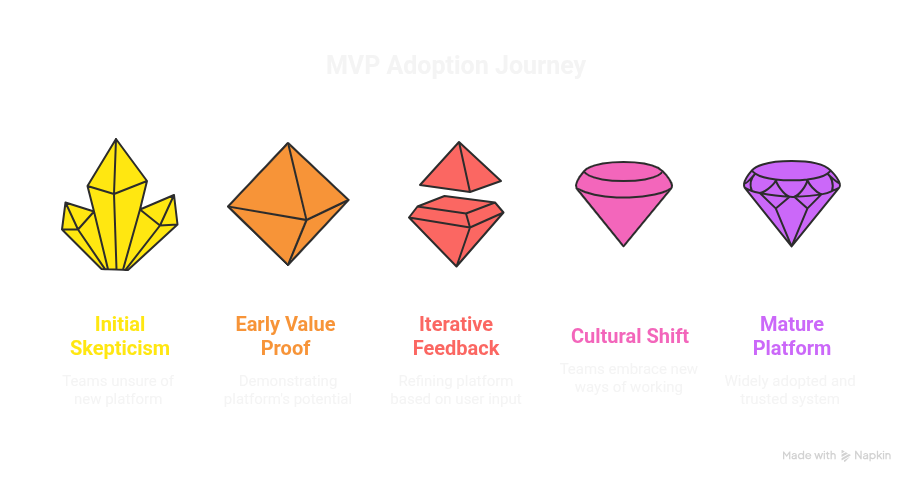From Vision to Value: Building a Minimum Viable Platform for a Customer
I still remember the day a new customer came to us, excited but overwhelmed.
They were on the verge of a major shift—ready to embrace platform engineering—but unsure how to start.
As a Platform Engineer with Customer Success at Heart and a background in both full-stack development and engineering management, I’ve been on both sides of the fence: building products as a developer, and enabling teams as part of a platform group. That dual perspective was exactly what I leaned on to guide them.
They didn’t need an overengineered solution.
They needed a Minimum Viable Platform (MVP) — something that would prove value fast, rally internal champions, and lay the groundwork for long-term transformation.
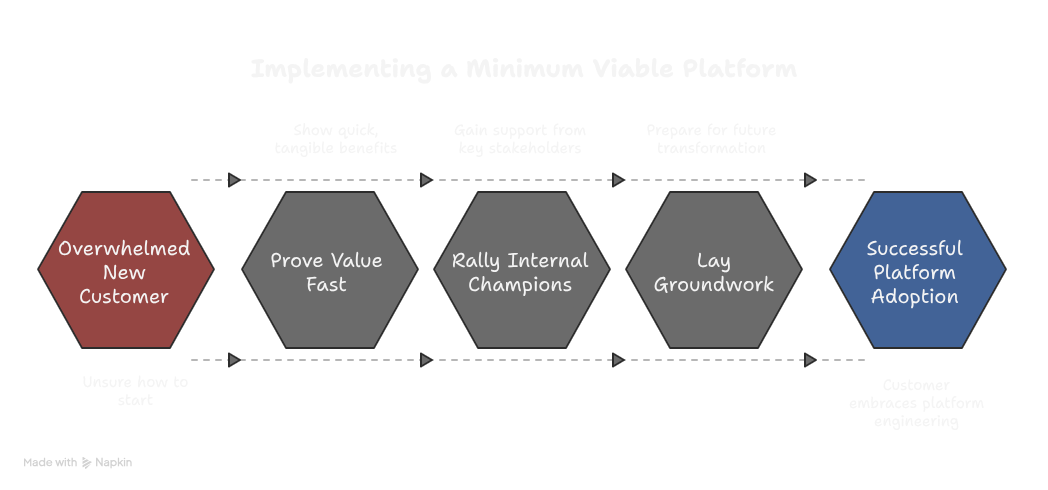
Understanding the Minimum Viable Platform (MVP)
The customer’s first thought was that MVP meant “fully ready-to-go platform.”
I explained that in platform engineering, the MVP is not the end state—it’s a proof point.
Our mission was to demonstrate value quickly by:
- Identifying a Pioneering Team — Bringing together not just platform engineers, but also the first developers who would use the platform.
- Building a Simplified, Representative Version — Think “hello world” for their internal developer platform (IDP): functional, useful, intentionally small.
- Crafting a Product-like Roadmap — Treating the platform as a product and developers as customers, gathering feedback with each iteration.
- Gaining Influential Champions — Letting early adopters become advocates.
- Avoiding Overwhelm — Keeping scope contained in a non-production environment to minimize risk.
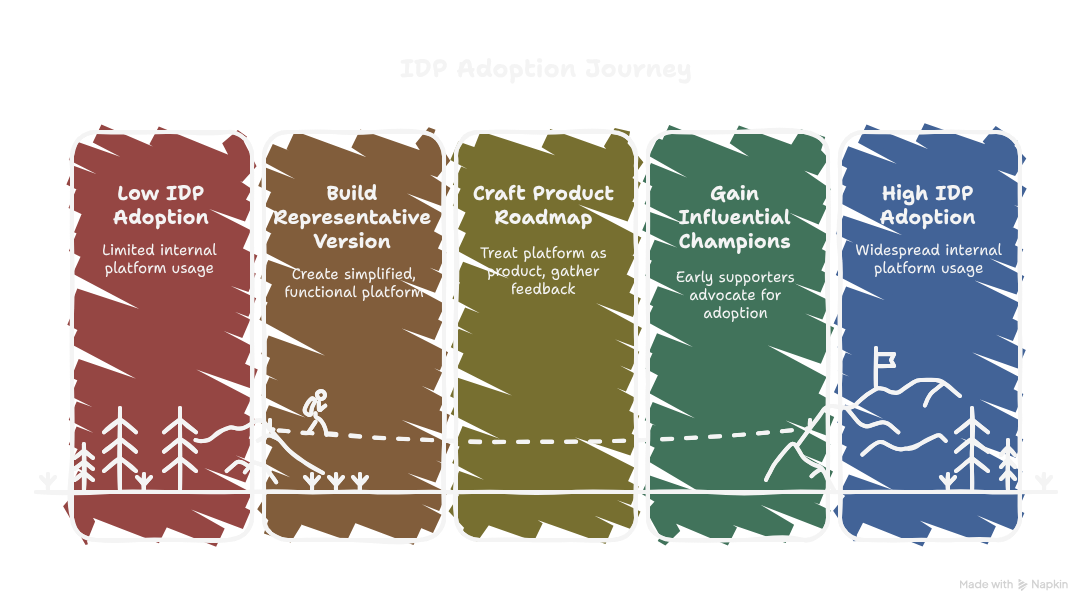
Designing with the Four Pillar Areas
To set them up for success, I used my four-pillar approach for MVP design:
- Representative — Simple yet realistic architecture: front-end, back-end service, database, CI/CD (GitHub Actions), ingress/DNS, and other essential elements.
- Repeatable — A reusable “starter kit” for future teams.
- Iterative — Solve Day 0–Day 100 problems first, saving advanced features for later.
- Innovative — Enough “wow” factor to inspire interest and adoption.
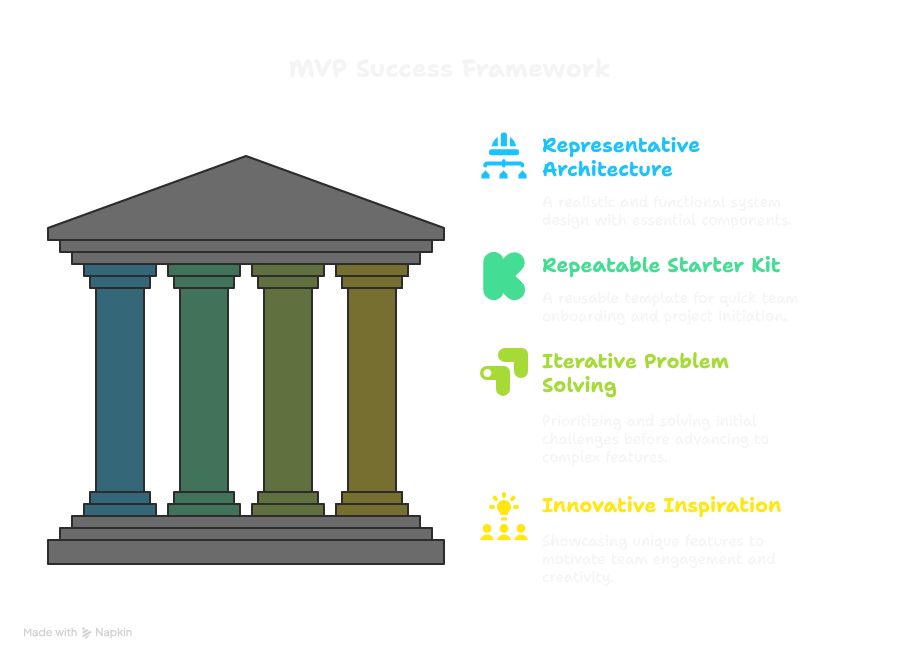
Avoiding Pitfalls
Two traps often derail platform initiatives:
- Overcomplicating early — We resisted packing in unnecessary features.
- Focusing solely on tools — Instead, we built golden paths, not golden cages: empowering, not restricting.
We also ensured the MVP delivered value beyond engineering:
Security gained better controls, finance improved resource tracking, and leadership saw measurable productivity gains.

Tailoring to Their Scale
This customer sat between SMB and enterprise, with:
- SMB traits — Limited dedicated platform resources → We broke the project into sprint-friendly tasks.
- Enterprise traits — A mature technical estate → We planned gradual integration with existing systems.
The adoption strategy blended SMB-style hands-on involvement with enterprise-style governance.
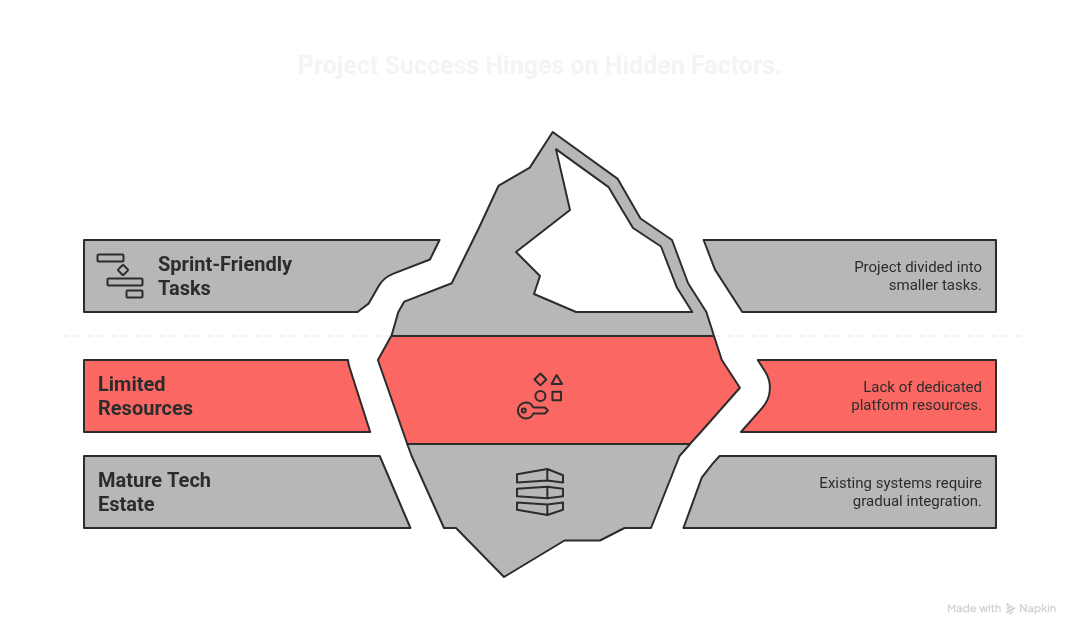
Handling Enterprise-Like Challenges
Even mid-sized customers face enterprise-level hurdles:
- Technical Complexity — Niche dependencies (including a critical CDN) that needed early priority.
- Stakeholder Management — Reporting value over technical minutiae.
- Legacy Systems — A phased migration plan, starting with greenfield projects on the IDP.
The MVP Pilot Adoption Plan
We used a three-phase cycle:
- MVP Baseline Improved — Build and refine with developer input.
- Seed in Scale (Production Readiness) — Harden the platform for production workloads.
- Evolution and Support — Continuous iteration with new adopters.
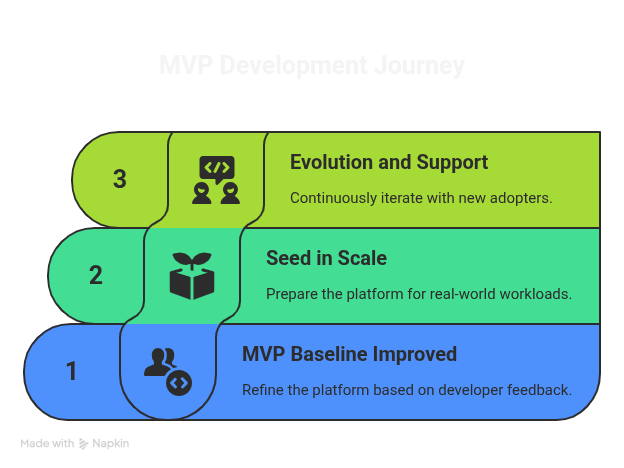
90-Day Plan Highlights:
- Two-week sprints for rapid progress.
- Training before deployment.
- Onboarding two pioneering teams quickly.
- Security integrated from day one.
- Feedback loop established to refine the golden path.
Measuring Success
We tracked leading indicators early, before waiting for lagging metrics like DORA:
- Complexity Index
- Autonomy Score (before vs. after onboarding)
- Time to Create a Service
- Onboarding Time
- Developer Satisfaction Score
Addressing Common Questions Along the Way
Throughout the project, I fielded recurring questions:
- Team Size — Medium-sized orgs typically have 3–4 engineers plus a manager.
- Timeline Pressure — Push back on unrealistic deadlines.
- Build vs. Buy — Mix of open-source (Backstage, Argo) and off-the-shelf solutions.
- Getting Started — Always begin with a real problem to solve.
- Solo Developer Advice — Lay strong foundations early if growth is expected.
- Avoiding Early Overcomplication — Resist building the “Borg Mothership” on day one.
- Value of External Coaching — Fresh perspectives uncover blind spots.
- Role of a Tech Product Manager — Translate developer needs into actionable platform work.
- Low Adoption — Revisit pain points and value proposition.
- Managing Expectations — Involve security, development, and leadership from the start.
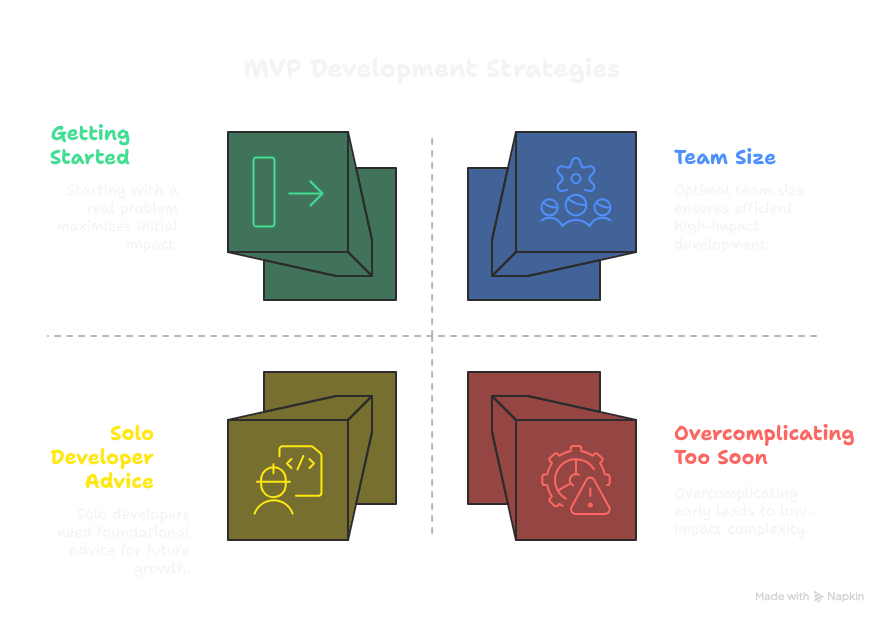
Final Thoughts
In the end, this MVP wasn’t just a technical win—it was a cultural shift.
By starting small, proving value early, and iterating with feedback, the customer transformed how their teams worked and laid the foundation for a widely adopted, mature platform.
That’s the magic of doing platform engineering right:
you’re not just building the platform—you’re building belief in it.
